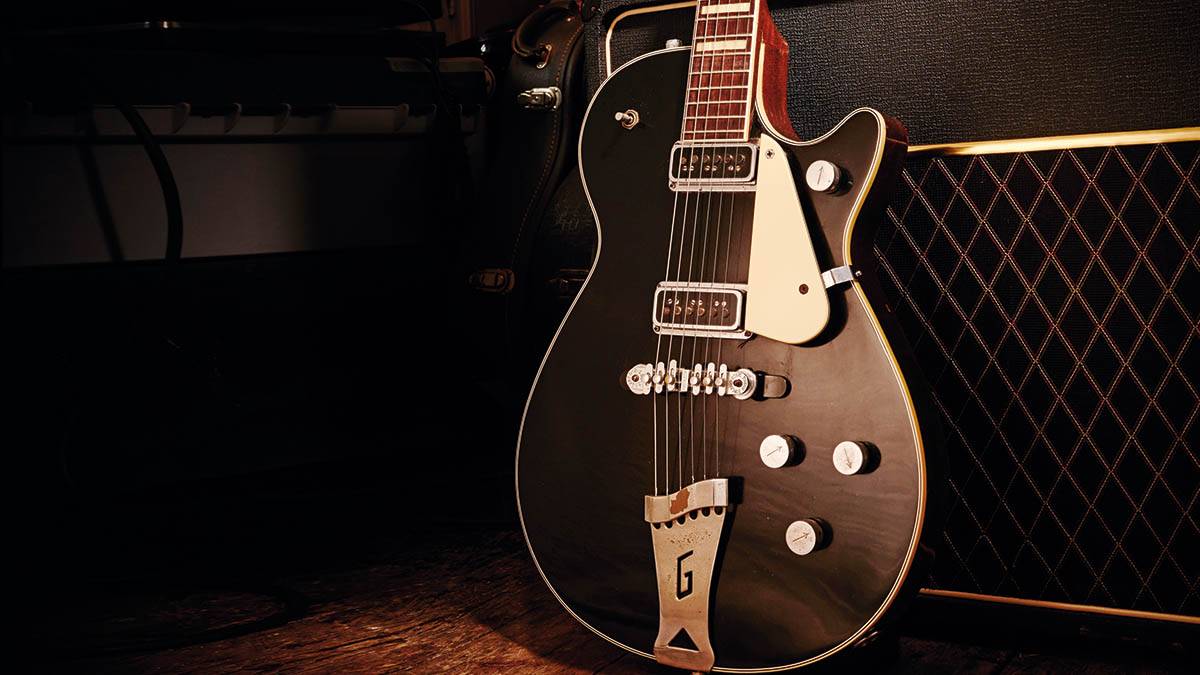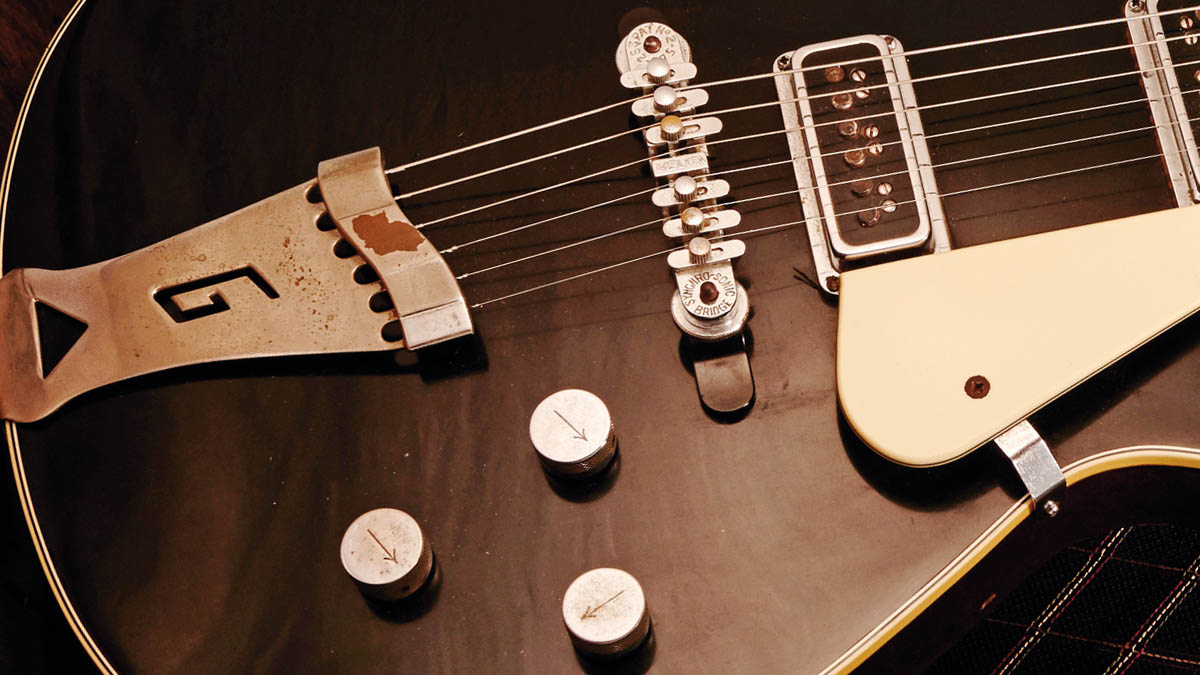How the Gretsch 6128 Duo Jet took flight and became the go-to electric for the likes of George Harrison, Cliff Gallup and Bo Diddley
Taking cues from Fender and Gibson, Gretsch released its first solidbody in1953

Back in the early 1950s, the concept of a solidbody electric guitar was beginning to catch on. Throughout the '30s and '40s, it was the finely crafted hollowbody archtops from the likes of Gibson and Epiphone that ruled the electric roost, but that began to change when Californian upstart Fender started making waves in the guitar world.
In 1950, Fender unveiled its revolutionary Esquire and Broadcaster models, attracting reactions from skeptics who criticized the now-iconic Telecaster blueprint for its utilitarian design.
To some degree, there was a reluctance to accept the new kid on the block during this watershed period in guitar history. Indeed, Fred Gretsch Jr. expressed surprise at his friend Ted McCarty’s decision to hit back with a Gibson solidbody electric in the form of the Les Paul in 1952.
Before long, however, Gretsch followed suit. The rampant success of Leo Fender’s enviable Spanish electrics was just too difficult to ignore.
Gretsch launched its take on an electric solidbody with the Duo Jet in 1953. As per Gibson’s Les Paul, the model featured dual single-coil pickups (hence ‘Duo’) and a single-cutaway mahogany body not dissimilar to its Kalamazoo cousin. But that’s where the similarities end.
Whereas the Gibson Goldtop was made from solid mahogany and featured a carved maple cap, it’s arguable that the Duo Jet isn't in fact a solidbody guitar at all. Heavily routed to accommodate cables and components, its construction is more akin to a semi-hollowbody, though a glued-on arched top devoid of f-holes gives it the appearance of a solid guitar.

Sporting a black finish, the 6128 model Duo Jet was soon joined by a distinctly more vibrant-looking equivalent model, the 6129 Silver Jet. Adorned in a silver-sparkle covering inherited from Gretsch’s popular drum line, the Silver Jet arrived in 1954 along with the stained-wood finish 6130 Round-Up.
Get The Pick Newsletter
All the latest guitar news, interviews, lessons, reviews, deals and more, direct to your inbox!
Featuring an abundance of Western-themed motifs, the swanky Round-Up served as the basis for the 6121 Chet Atkins Solid Body and appeared in Gretsch’s 1955 colour catalog, Guitars For Moderns, alongside the new Oriental Red-finish 6131 Jet Firebird.
Although Chet Atkins tended to eschew the 6121 in favor of his 6122 Country Gentleman signature model, Gretsch’s seminal solidbody design was regularly seen in the hands of some of the world’s most groundbreaking guitar players. Rockabilly guitarist Cliff Gallup was an early proponent, and rock ’n’ roll pioneer Bo Diddley appeared on the cover of his 1959 album, Go Bo Diddley, with a Jet Firebird.
George Harrison famously used his 1957 Duo Jet to perform and record with The Beatles during the band’s early days. He later appeared on the cover of his 1987 solo album, Cloud Nine, brandishing the same DeArmond Model 2000-equipped guitar (referred to as ‘Dynasonic’ pickups in Gretsch literature).
Ubiquitous across Gretsch’s electric guitar line since the late 40s, these punchy high-output single coils were superseded by the company’s own Filter’Tron humbuckers in 1958.
Designed by Ray Butts (inventor of the EchoSonic tape echo-equipped guitar amp) in collaboration with Chet Atkins during the mid-50s, the Filter’Tron is a completely different beast and presented the greatest change to the Jets’ sound to date. The most prominent design alteration came later in 1961 when the Jets transitioned to a double-cutaway body.
Rod Brakes is a music journalist with an expertise in guitars. Having spent many years at the coalface as a guitar dealer and tech, Rod's more recent work as a writer covering artists, industry pros and gear includes contributions for leading publications and websites such as Guitarist, Total Guitar, Guitar World, Guitar Player and MusicRadar in addition to specialist music books, blogs and social media. He is also a lifelong musician.
“It holds its own purely as a playable guitar. It’s really cool for the traveling musician – you can bring it on a flight and it fits beneath the seat”: Why Steve Stevens put his name to a foldable guitar
“Finely tuned instruments with effortless playability and one of the best vibratos there is”: PRS Standard 24 Satin and S2 Standard 24 Satin review

![A black-and-white action shot of Sergeant Thunderhoof perform live: [from left] Mark Sayer, Dan Flitcroft, Jim Camp and Josh Gallop](https://cdn.mos.cms.futurecdn.net/am3UhJbsxAE239XRRZ8zC8.jpg)









